308. 7/8" diameter

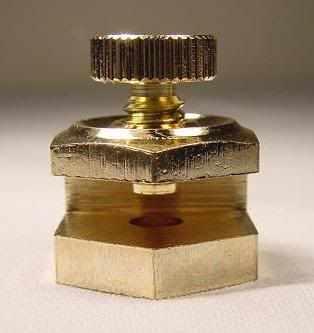
309. 3 3/4" long, 3 pounds 6 ounces


310.
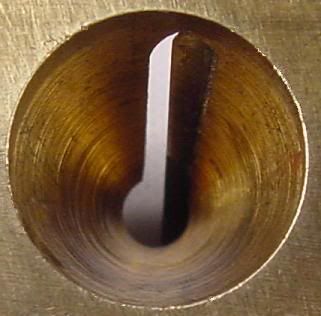
311. 3 5/8" tall
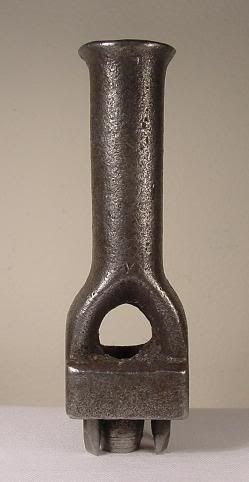
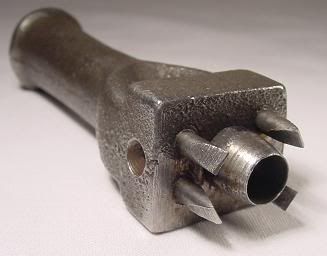
312. The puzzle for this one is to determine how the top piece of this stacked freestanding wood is able to entirely overhang the bottom piece.
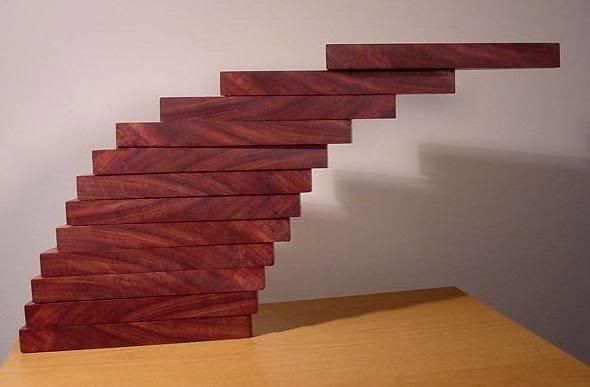
313. 3 1/4" long
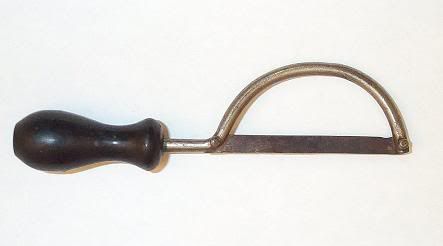
314. 3 1/2" tall
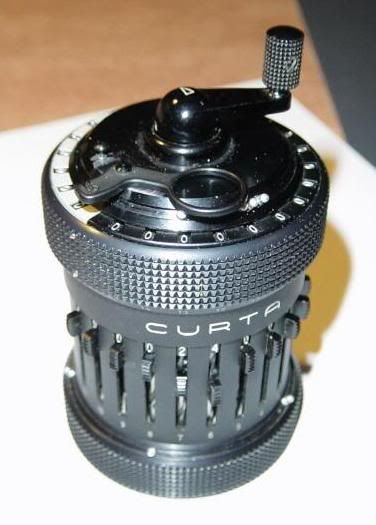
Answers


309. 3 3/4" long, 3 pounds 6 ounces


310.

311. 3 5/8" tall


312. The puzzle for this one is to determine how the top piece of this stacked freestanding wood is able to entirely overhang the bottom piece.

313. 3 1/4" long

314. 3 1/2" tall

Answers

13 Comments:
308 - a set of stair gages that clamp to a framing square for laying out stair carriers.
By Anonymous, at 3/30/2005 6:36 PM
Anonymous, at 3/30/2005 6:36 PM
310- A pencil sharpener
By Anonymous, at 3/30/2005 6:37 PM
Anonymous, at 3/30/2005 6:37 PM
312 - The center of gravity (on the horizontal axis) is still located less than halfway to the left of the bottom-most object;
By Anonymous, at 3/30/2005 10:04 PM
Anonymous, at 3/30/2005 10:04 PM
308. Square stops for a framing square
309. Metal dolly used to back a hammer for auto bodywork
310. Pencil sharpener
311. Grommet punch
312. The center of mass is still centered
313. Curta rotary Calculator
By Anonymous, at 3/30/2005 10:15 PM
Anonymous, at 3/30/2005 10:15 PM
>308 - a set of stair gages...
>310- A pencil sharpener
>309. A dolly, used in body shops...
These are all correct.
>312 - The center of gravity (on the horizontal axis) is still located less than halfway to the left of the bottom-most object;
There is more overhang in this stack of wood than you could normally get, though with nothing to compare it to I guess it's hard to tell. I'd like to change the question here to: What design feature was used to maximize the horizontal overhang?
>308. Square stops for a framing square
>309. Metal dolly used to back a hammer for auto bodywork
>310. Pencil sharpener
>311. Grommet punch
>312. The center of mass is still centered
>313. Curta rotary Calculator
All correct.
Rob
By Rob H., at 3/31/2005 8:08 PM
Rob H., at 3/31/2005 8:08 PM
312: This overhang is based on the fact that the harmonic series,
1 + 1/2 + 1/3 + 1/4 + ...
diverges. The top is halfway over the second, which is 1/3 of the way over the third, which is 1/4 of the way over the fourth, etc.
In principle, one could have an overhang as large as one wants, though one would have to have an awful lot of planks.
Dave
By Anonymous, at 4/01/2005 8:01 PM
Anonymous, at 4/01/2005 8:01 PM
Actually, looking at it more closely, we see that the top is halfway over the second, which is 1/4 of the way over the third, which is 1/6 of the way over the fourth, etc...
The sum
1/2 + 1/4 + 1/6 + 1/8 + ...
also diverges, so we can still get as large an overhang as we would like. I think (though I don't want to go through the math) that as long as the planks are placed as described above, the center of gravity of the mass will be right at the halfway point of the bottom plank, implying that the structure will not tip over.
Dave
By Anonymous, at 4/01/2005 8:03 PM
Anonymous, at 4/01/2005 8:03 PM
Actually, looking at it more closely, we see that the top is halfway over the second, which is 1/4 of the way over the third, which is 1/6 of the way over the fourth, etc...
The sum
1/2 + 1/4 + 1/6 + 1/8 + ...
also diverges, so we can still get as large an overhang as we would like. I think (though I don't want to go through the math) that as long as the planks are placed as described above, the center of gravity of the mass will be right at the halfway point of the bottom plank, implying that the structure will not tip over.
Dave
By Anonymous, at 4/01/2005 8:03 PM
Anonymous, at 4/01/2005 8:03 PM
In theory you could get as large of an overhang as you like, but in real life it doesn't seem like anyone could get the top piece offset by more than two or three lengths.
According to "Omni Games", "for three lengths you would need 227
pieces", and that's probably calculated using the exact fractions.
When actually stacking them, it works better to pull the pieces back
about an 1/8 of an inch, otherwise the structure becomes unstable very
easily. According to the same book, for a ten length offset you would
need 1.5 x 10^44 pieces!
As I mentioned earlier, this structure was designed to maximize the horizontal overhang.
Rob
By Rob H., at 4/02/2005 5:42 PM
Rob H., at 4/02/2005 5:42 PM
>312. Water on the flat surfaces >will do it.
Water wasn't used on this one.
>313. A saw
This tool is not used for cutting.
>314 is the calculator
Correct.
By Rob H., at 4/02/2005 8:49 PM
Rob H., at 4/02/2005 8:49 PM
>312. What if the last (top) piece is pear or triangular in shape...
Correct, at least you have the right idea, they aren't quite triangles but they are wider at the back, and all of the pieces are the same shape.
Rob
By Rob H., at 4/04/2005 4:57 PM
Rob H., at 4/04/2005 4:57 PM
308: Square stops for repeated marking of rafter cuts/stair stringers and such.
309: Heel Dolly that someone used to test a number 8 stamping punch on.
310: Depending on size either a pencil sharpener or a taper cutter for wooden spoke tenions.
311: Punch for metal tabbed grommets.
312: Tapered blocks?
313: Scraper?
314 : Curta type II mechanical calculating machine. Made in Liechtenstein (I have one just like it sitting on the desk)Don't leave it out in the open very long, they are worth BIG money. The type II runs about 900.00 - 1200.00
By Anonymous, at 4/05/2005 12:20 PM
Anonymous, at 4/05/2005 12:20 PM
>308: Square stops...
>309: Heel Dolly...
Correct
>310: Depending on size either a pencil sharpener...
Pencil sharpener is right
>311: Punch for metal tabbed grommets...
>312: Tapered blocks?
Correct
>313: Scraper?
I guess it could be classified as a scraper, see the answer link for details.
>314 : Curta type II mechanical calculating machine...
Yes
By Rob H., at 4/05/2005 2:47 PM
Rob H., at 4/05/2005 2:47 PM
Post a Comment
<< Home